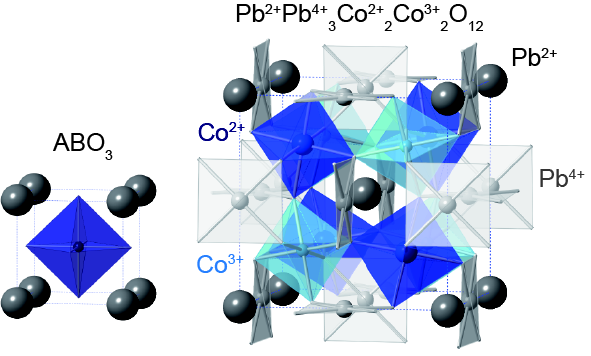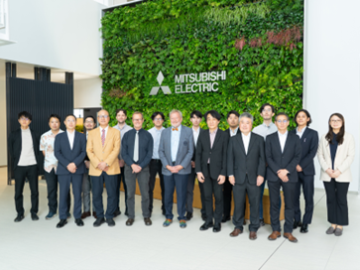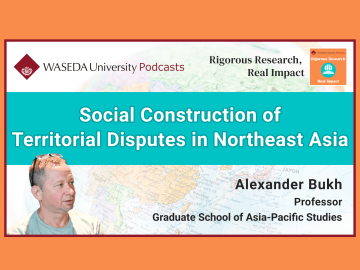World’s first success in synthesizing perovskite oxide PbCoO3
Discovery of a new charge distribution
Possibility for developing functional oxides by controlling valence of ions

A group of scientists, including Professor Takashi Mizokawa from Waseda’s Faculty of Science and Engineering, succeeded in synthesizing perovskite oxide PbCoO3, an oxide (O3) mineral in which oxygen is combined with lead (Pb) and cobalt (Co). They also discovered a charge distribution never seen before, where both lead and cobalt had charge orderings, by controlling the energy levels of lead and cobalt. In an experiment using X-ray radiation and neutron beams, its charge ordering structure was also revealed. These findings present a new strategy for mixing valence states in single-phase oxides, possibly producing next-generation materials with properties such as superconductivity without it being resistant to large magnetic force or have high thermopower.
This study was published in the Journal of the American Chemical Society on March 15.
Publication information
- Article title: A-site and B-site charge orderings in an s-d level controlled perovskite oxide PbCoO3
- Authors: Yuki Sakai, Junye Yang, Runze Yu, Hajime Hojo, Ikuya Yamada, Ping Miao, Sanghyun Lee, Shuki Torii, Takashi Kamiyama, Marjana Ležaić, Gustav Bihlmayer, Masaichiro Mizumaki, Jun Komiyama, Takashi Mizokawa, Hajime Yamamoto, Takumi Nishikubo, Yuichiro Hattori, Kengo Oka, Yunyu Yin, Jianhong Dai, Wenmin Li, Shigenori Ueda, Akihisa Aimi, Daisuke Mori, Yoshiyuki Inaguma, Zhiwei Hu, Takayuki Uozumi, Changqing Jin, Youwen Long and Masaki Azuma
- Published in: Journal of the American Chemical Society, 139 (2017)
- DOI:10.1021/jacs.7b01851








